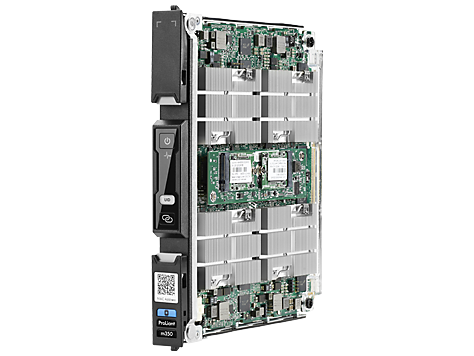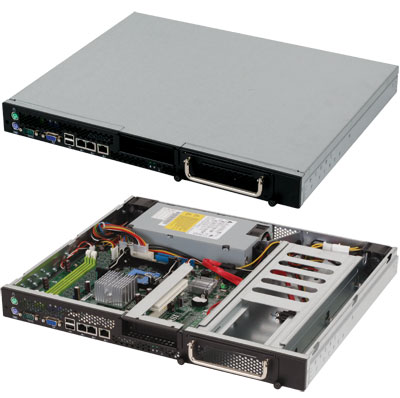X-Gene 1, Atom C2000 and Xeon E3: Exploring the Scale-Out Server World
by Johan De Gelas on March 9, 2015 2:00 PM EST
The recent announcements of ARM, HP, AppliedMicro, AMD, and Intel make it clear that something is brewing in the low-end and micro server world. For those of you following the IT news that is nothing new, but although there have been lots of articles discussing the new trends, very little has been quantified. Yes, the Xeon E3 and Atom C2000 have found a home in many entry-level and micro servers, but how do they compare in real-world server applications? And how about the first incarnation of the 64-bit ARMv8 ISA, the AppliedMicro X-Gene 1?
As we could not find much more than some vague benchmarks and statements that are hard to relate to the real world, we thought it would be useful to discuss and quantify this part of the enterprise market a bit more. We wanted to measure performance and power efficiency (performance/watt) of all current low-end and micro server offerings, but that proved to be a bit more complex than we initially thought. So we went out for a long journey from testing basic building blocks such as the ASRock Atom board, trying out an affordable Supermicro cloud server with 8 nodes, to ultimately end up with testing the X-Gene ARM cartridge inside an HP Moonshot chassis.
It did not end there. Micro servers are supposed to run scale-out workloads, so we also developed a new scale-out test based on Elasticsearch. It's time for some in depth analysis, based on solid real-world benchmarks.
Target Audience?
This article – as with most of my articles – is squarely targeted at professionals like system administrators and web hosting professionals. However, if you are a hardware enthusiast, the low-end server market does have quite a bit to offer. For example, if you want to make your system more robust, the use of ECC RAM may help. Also, if you want to experiment/work with virtual machines, the Xeons offer VT-d that allows you to directly access I/O devices in a virtual machine (and in some cases, the GPU). Last but not least, server boards support out-of-band remote management which allows you to turn the machine on and off remotely. That can be quite handy if you use your desktop as a file server as well.
Micro and Scale-Out Servers?
The business model of many web companies is based on delivering a service to a large number of users in order to be profitable. This is because the income (advertising or something else) per user is relatively low. Dropbox, Facebook, and Google are the prime examples that everybody knows, but even AnandTech is no exception to this rule. The result is that most web companies need lots of infrastructure but do not have the budget of an IT department that is running a traditional transactional system. Web (hosting) companies need dense, power efficient, and cheap servers to keep the hosting costs low.
Small 1U servers: dense but terrible for administration & power efficiency
Just a few years ago, they had few options. One possible option was half-width or short depth 1U servers, another was the more dense forms of blade servers. As we have shown more than once, 1U servers are not power efficient and need too much cabling, PSUs, etc. Blade servers are more power efficient, reduce the cabling complexity, and the total number of PSUs and fans. But most blade servers have lots of features web companies do not use and are also too expensive to be the ideal solution for all the web companies out there.
The result of the above limitations is that both Facebook and Google developed their own servers, a clear indication that there was a need for a different kind of server. In the process, a new kind of dense server chassis was introduced. At first, the ones with low power nodes with "wimpy" cores were called "micro servers". The more beefy servers targeted at more demanding scale-out software were called "scale-out servers". Since then, SeaMicro, HP, and Supermicro have been developing these simplified blade server chassis that offer density, low power, and low(er) costs.
Each vendor took a different angle. SeaMicro focused on density, capacity, and bandwidth. Supermicro focused on keeping the costs and complexity down. HP went for a flexible solution that could address the largest possible market – from ultra dense micro servers to beefier scale-out servers to specialized purpose servers (video transcoding, VDI etc.). Let's continue with a closer look at the components and servers we tested.











47 Comments
View All Comments
gdansk - Monday, March 9, 2015 - link
xgene is not looking so great. Even if it is 50% more efficient as they promise they'll still be behind Atom.Samus - Monday, March 9, 2015 - link
HP Moonshot chassis are still *drool*Krysto - Monday, March 9, 2015 - link
The main problem with the non-Intel systems is not only that they use older processes compared to Intel, but that they use older processes even compared to the rest of the non-Intel chip industry. AMD is typically always behind 1 process node among non-Intel chip makers. If they'd at least use the cutting edge processes as they become available from non-Intel processes, maybe they'd stand a chance, especially now that the gap in process technologies is shrinking.Samus - Monday, March 9, 2015 - link
AMD simply isn't as bad as people continually make them out to be. Yes, they're "behind" Intel but it's all in the approach. We are talking about two engineering houses that share nothing in common but a cross licensing agreement. AMD has very competitive CPU's to Intel's i5's for nearly half the price, but yes, they use more power (at times 1/3 more.)But facts are facts: AMD is the second high-tech CPU manufacture in the world. Not Qualcomm, not Samsung. It's pretty obvious AMD engineering talent spreads more diversity than anyone other than Intel, and potentially superior to Intel on GPU design (although this has obviously been shifting over the years as Intel hires more "GPU talent.")
AMD in servers is a hard pill to swallow though. If purchasing based on price alone, it can be a compelling alternative, but for rack space or low-energy computing?
Taneli - Tuesday, March 10, 2015 - link
AMD doesn't even make it in top 10 semiconductor companies in sales. Qualcomm is three, Samsung semicondutors six and Intel almost ten times the size of AMD.Outside of the gaming consoles they are being completely overrun by competition.
owan - Tuesday, March 10, 2015 - link
I'm sorry, at one point I was an AMD fanboy, back when they actually deserved it based on their products, but you just sound like an apologist. Facts are the facts, FX processors aren't competitive with i5's in performance or power or performance/$ because they get smacked so hard they can't be cheap enough to make up for it. Their CPU designs are woefully out of date, their APU's are bandwidth starved and use way too much power to be useful in the one place they'd be great (mobile), and their lagging process tech means theres not much better coming on the horizon. I don't want to see them go, but at the rate ARM is eating up general computing share, it won't be long before AMD becomes completely irrelevant. It will be Intel vs. ARM and AMD will be an afterthought.xenol - Wednesday, March 11, 2015 - link
Qualcomm is used in pretty much used in most cell phones in the US to the point you'd think Qualcomm is the only SoC manufacturer. I'm pretty sure that's also how it looks in most of the other markets as Korea. Plus even if their SoCs aren't being used, they're modems are heavily used.If anything, Qualcomm is bigger than AMD. Or rather, Qualcomm is the Intel of the SoC market.
xenol - Wednesday, March 11, 2015 - link
[Response to myself since I can't edit]Qualcomm's next major competitor is Apple. But that's about it.
Also I meant to say other markets except Korea.
CajunArson - Monday, March 9, 2015 - link
Bear in mind that the Atom parts were commercially available in 2013, so they are by no means brand-new technology and the 14nm Atom upgrades will definitely help power efficiency even if raw performance doesn't jump a whole lot.Anandtech is also a bit behind the curve because Intel is about to release Xeon-D (8 Broadwell cores and integrated I/O in a 45 watt TDP, or lower), which is designed for exactly this type of workload and is going to massively improve performance in the low-power envelope sphere:
http://techreport.com/review/27928/intel-xeon-d-br...
SarahKerrigan - Monday, March 9, 2015 - link
14nm server Atom isn't coming.http://www.eetimes.com/document.asp?doc_id=1325955
"Atom will become a consumer only SoC."